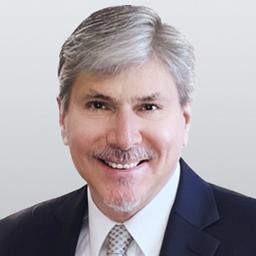At least five school districts, most in the northeast of the country, have reinstated mask requirements for students amid an uptick in COVID-19 infections, and two requested that students be tested for the virus before returning to school from winter break.
However, the trend toward student mask requirements does not appear to be growing toward the levels seen a year ago at the height of the pandemic.
The number of new COVID-19 infections rose after reaching a weekly low of about 260,000 on Oct. 19, according to the Centers for Disease Control (CDC).
By Dec. 21, weekly infections peaked at more than 487,000, which prompted action in several school districts.
Mask Ask Versus Mask Mandate
As the infection rate rose in December, the CDC increased the infection risk for some counties to high, triggering mandatory mask policies in at least two districts while two others adopted mask mandates for other reasons.The infection risk in both counties remains high according to the CDC.
Paterson Public Schools in New Jersey issued a mask mandate effective Jan. 3 for its approximately 25,000 students, but the move was not prompted solely by CDC risk ratings.

Experts Question the Science
Following the December increase in COVID-19 infection, some health experts have recommended a voluntary return to masking in public spaces as a preventive measure.“The mask just helps to decrease transmission of a lot of the common illnesses,” pediatric emergency physician Dr. Elizabeth Murray told Good Morning America. She advises both children and adults to wear masks if possible in crowded indoor settings.
However, some health experts have questioned the effectiveness of mask-wearing by the general public in preventing airborne viral infection.
“There is no study in the world that shows that masks work that well,” Dr. Ashish Jha, the White House’s COVID-19 coordinator, said during a December discussion with the Philadelphia Inquirer. Jha was promoting investments made in improving air quality as a way to cut down on COVID-19 infections.
Israeli health specialists Yoav Yehezkelli and Amnon Lahad voiced a similar objection to mask policies in a December letter to the Israel Medical Association Journal.
Yehezkelli is a specialist in internal medicine and medical management, and a founder of the Epidemic Management Team and Evaluation Programs for Extreme Biological Incidents.
Lahad is chairman of the National Council for the Health of the Community and head of the Department of Family Medicine at the School of Medicine at the Hebrew University of Jerusalem.
Both are members of the Public Emergency Council for the COVID-19 Crisis, an independent organization comprising Israeli physicians, researchers, and social welfare professionals.
The data available on respiratory viruses, including influenza and various types of coronaviruses prior to the COVID-19 outbreak, showed that there is no place for wearing masks to prevent the spread of a respiratory virus, Yehezkelli told The Epoch Times.

“All the studies done in the world until 2020 showed that there is no justification for this,” he said, speaking of universal masking.
Yehezkelli drew a distinction between observational studies, which some policymakers have relied on, and more rigorous scientific inquiries.
“In medicine, we try to rely on controlled studies, which are of higher quality than observational studies.”
In the context of medical treatment, when a patient with respiratory disease such as COVID-19 is closely examined by medical staff, “there is justification for wearing masks by both the therapist and the patient,” he said.
Even in a medical environment, a patient treated for a non-respiratory ailment like leg pain or anemia would have no reason to wear a mask, Yehezkelli said.
Pre-COVID-19 guidelines of the World Health Organization and the CDC also showed that there is no need for wearing masks in the general public, said Yehezkelli.
Infections and Mandates Well Below Previous Levels
Though the recent rise in COVID-19 infections and the closure of some schools has gained wide notice, neither approaches the numbers seen in 2020-2021.The weekly rate of infection remains well below the July peak of more than 920,000 cases, a mere fraction of the 5.6 million weekly cases reported a year ago.
With 18,328 public school districts in the United States serving more than 50 million students, additional mask mandates in four districts serving some 62,000 students affect about 1 percent of students and a tiny fraction of districts.





